Are Palm Trees Native to Florida?
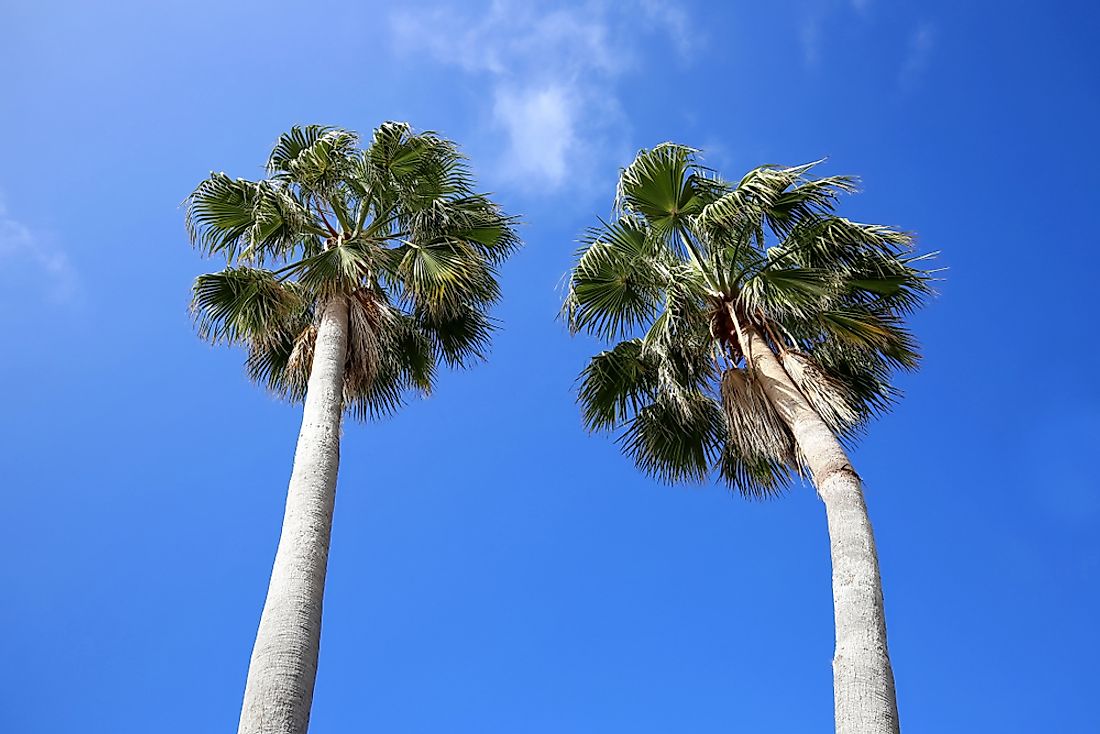
Palm trees fall under the Arecaceae family and the order Arecales in their scientific classification. The palm tree has about 2,600 species with the common palm trees being the coconut palm and the date palm. Palm trees can be found in warm temperate, tropical, and sub-tropical climate regions. Palms are mostly straight, having no branches though a few species have branches. Palm trees can withstand strong winds and floods and are in present times viewed to symbolize vacations and the tropical areas.
Are Palm Trees Native to Florida?
Florida is a sub-tropical state in the South Eastern region of the United States. Most of the state is at or near sea level making the environment suitable for palm trees. It is important for plants grown in Florida to be salt tolerant due to the state's proximity to the ocean. Florida has a few native palm trees, but the number of imported palm tree species surpasses the native Florida palm trees.
Florida’s Native Palm Trees
Everglades Palm / Paurotis Palm
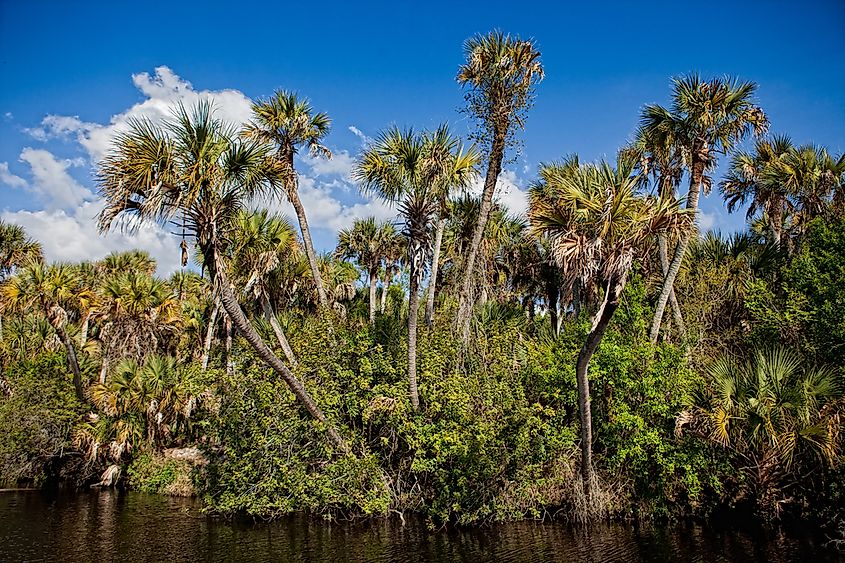
Acoelorrhaphe wrightii, commonly known as the Everglades Palm or the Paurotis Palm, is tall with a shaggy trunk and has leaves that have sharp teeth. It is a rare palm species native to Florida. The Everglades can grow up to 30 feet high, and the crest can spread up to 20 feet cross. The tree cannot stand cold temperatures, it is perennial, and it flowers during spring and summer. It is only found in South Florida.
Florida Silver Palm
The scientific name for this palm tree is coccothrinax argentata. This species is a fan palm that grows slowly to about 6-20 feet tall. The leaves are dark-blue above and silver below, earning the tree its name silver palm. The Florida Silver Palm prefers to live in rocky environments.
Needle Palm
Rhapidophyllum hystrix, commonly known as the Needle Palm, can withstand short periods of cold temperatures and it can grow in areas with warm temperate climate. This palm tree mostly appears as a shrub with several stems emerging from a single base and growing slowly. The Needle Palm can be found throughout the entire state of Florida, and even lives north of the state.
Florida Royal Palm
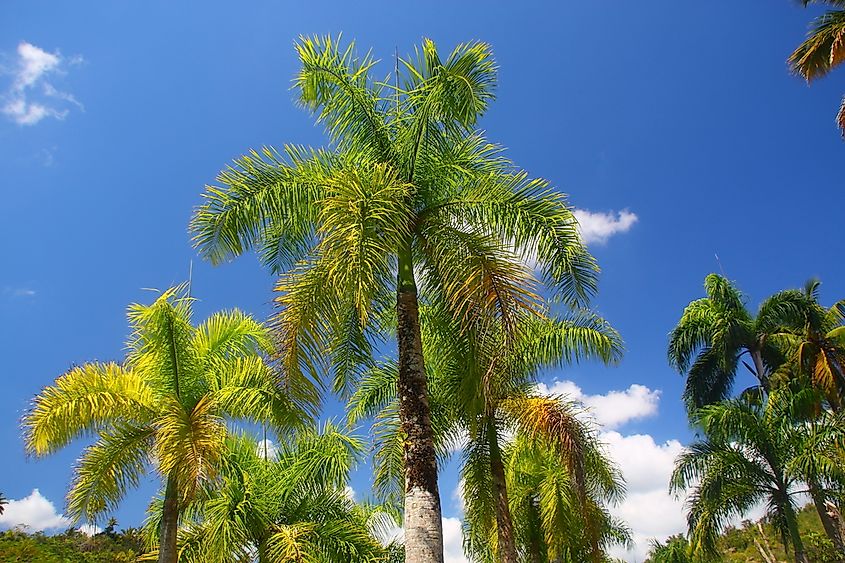
The Florida Royal Palm (Roystonea regia) can grow to heights of 50 to 70 feet tall. This is the type of palm that is traditionally used in the Catholic custom of Palm Sunday. The Royal palm has a grey-white, smooth, rotund trunk and a green crown. This tree's wood is sometimes used as lumber.
Cabbage Palm
Sabal palmetto, commonly known as the Cabbage Palm, grows up to 65 feet tall. The leaves are bluish to olive green, and the stems have tiny teeth. This species can withstand some cold temperatures and drought. The cabbage palm is Florida's official state tree. The cabbage palm is well-known for its adaptability and is considered to be an easy tree to take care of.
Dwarf Palmetto
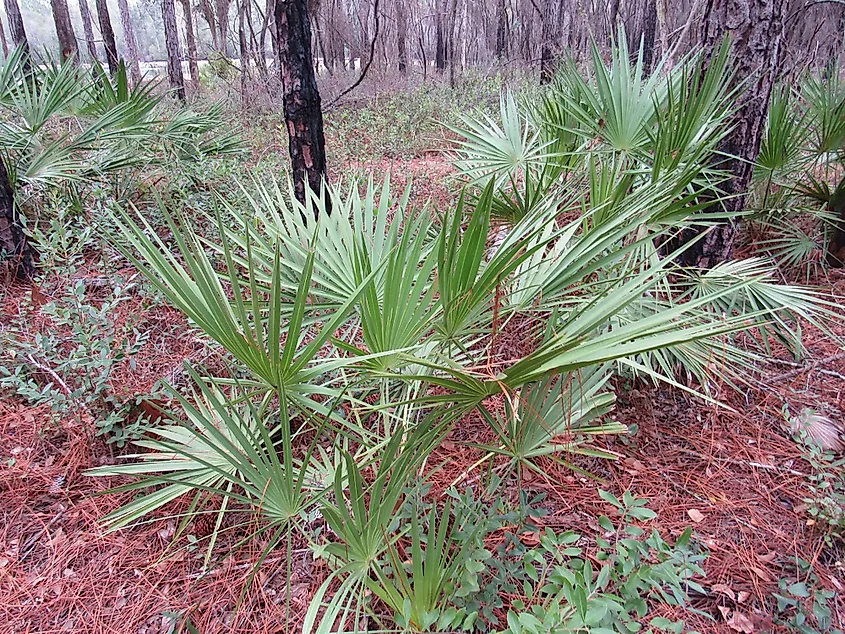
Commonly known as the Dwarf Palmetto, Sabal minor is a fan-shaped shrub that grows to 5-10 feet tall. The tree does not have a stem, and the leaves emerge from an underground stock. This species can withstand cold and frost.
Florida Thatch Palm
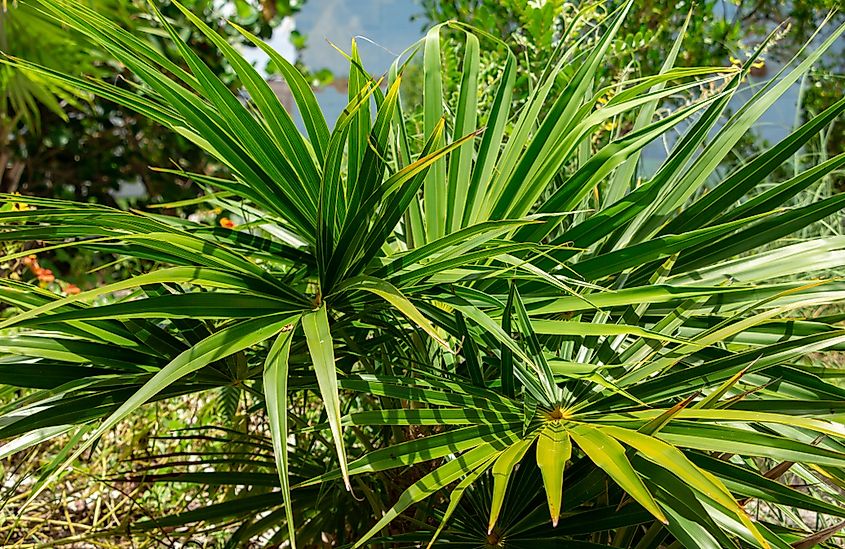
Thrinax radiata, commonly known as the Florida Thatch Palm, grows to around 40 feet tall, and its trunk gets to 4-5 inches thick. This species is used for landscaping along roadways and residential areas in Florida. The Florida Thatch Palm prefers sandy ground.
Buccaneer Palm / Florida Cherry Palm
Commonly known as the buccaneer palm or the Florida Cherry Palm, Pseudophoenix sargentii grows on limestone or sandy soils, and it is an endangered species. This species is used for ornamental purposes. Like other trees on this list, the buccaneer palm is only found in the extreme southern points of Florida.
Imported Palm Tree Species
The coconut palm, Bismarck, foxtail palm, fishtail palm, triangle palm, bottle palm, Christmas palm, and the red leaf palm are some of the non-native palm species that grow in Florida. The cultivation of an exotic species of palm in a different environment needs one to study the type of soil and climatic conditions to determine if the species will do well.











